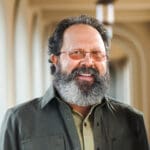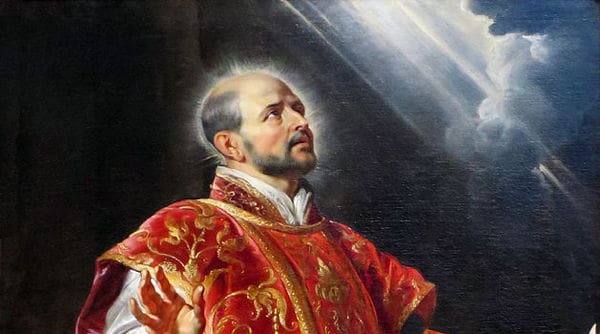 Interview With Official From Ignatian Exercises Federation
Interview With Official From Ignatian Exercises Federation
By Antonio Gaspari (Zenit.org)
Every year, a countless number of Catholics escape from their typical activities and take days to retreat into prayer following the system of the Ignatian spiritual exercises.
The Pope himself is one of these Catholics; Benedict XVI’s annual spiritual exercises with the Roman Curia begin Feb. 21.
Just prior to the Holy Father’s retreat, the Italian Federation of Spiritual Exercises will hold their annual assembly. The president of the Pontifical Council for Culture, Archbishop Gianfranco Ravasi, will be one of the participants in the three-day meeting to discuss the relationship between spiritual exercises and the people of the Church.
In order to understand better the history, timeliness and modern practice of spiritual exercises, ZENIT spoke with Passionist Father Stanislao Renzi, national secretary of the federation.
Many young people don’t even know what the spiritual exercises are or why they are done. Can you explain them briefly?
Father Renzi: It’s true that many young people no longer even know what the spiritual exercises are or why they are practiced: Today youth live in a world that loves noise, not silence and recollection, and many want to be free of laws and discipline. It is difficult to speak to them of the “search for the will of God in deciding their own life.”
However, there are many [young adults] — between 20 and 30 years old — who do the spiritual exercises by assiduously attending courses in retreat houses, at times on weekends. The representatives [of these retreats] offer the young people the possibility to pray and to reflect individually or in community, so that they discern their choices in life and make their own spiritual journey in the Church. The courses are open to all young people who wish to make their own lives mature according to God’s plan.
It should also be remembered that, according to St. Ignatius, the spiritual exercises are not a time of study or of simple recollection and prayer. They are a search: “As walking and running are physical exercises, so any form of preparing and disposing the soul to get rid of all disordered affections and, after being rid of them, to seek the will of God in deciding on one’s own life, for the salvation of one’s soul, is called spiritual exercises.” (Es. Sp. Ann.1).
Can you tell us the history of the spiritual exercises? When did they begin? What does the Bible say in this respect? Who are the saints who practiced the spiritual exercises?
Father Renzi: Spiritual exercises were already done by the Desert Fathers, but those we call the classic exercises go back to St. Ignatius of Loyola, who began to write them in a book in 1522 and perfected them in 1548. The book begins the exercises by posing first fundamental questions: For what has God created us?
The object of the exercises, in St. Ignatius’ thought, is to order one’s life according to God’s plan, as man was created to serve God and only through this can he attain salvation.
He recommended that the exercises be done in a place other than one’s usual environment. There were in fact “houses of exercises,” where silence and stillness helped the exercises to be made.
St. Ignatius took from the Bible the ideas for the gradual composition of the book of spiritual exercises, in which are reflected his feelings when finding the secret to discern the will of God. Hence the Bible is a fundamental text for all types of spiritual exercises.
It would take a long time to find all the passages of the Bible that [could be referred] to the exercises. I find one concretely in Psalm 118:47-64. The Psalmist tells the Lord he has scrutinized his ways and will direct his steps to the Commandments; he says he is prepared to keep the secrets of the Lord. Finally he asks the Lord to show him his will, given that the earth is full of the Lord’s love. Analogous is the itinerary of the one doing the exercises, who revises his own life to direct it in the sense of the will of God.
Other references might be the Virgin Mary, who meditated in her heart everything that happened around her. Mary, in fact, listened to and meditated the Scriptures, linking them to Jesus’ words and to the events she went discovering in her history in relation with her Son. Another is Jesus’ invitation to the disciples to withdraw in solitude to rest, which is spiritually salutary. Finally, the reference to the Scriptures in the conversation with the disciples of Emmaus, so that they understand what happened in his Death and Resurrection. St. Ignatius’ exercises go over the whole life of Jesus as it is narrated in the Gospels.
In addition to St. Ignatius, many saints practiced the spiritual exercises as a renewal of Christian life. I will mention only a few: St. Dominic, St. Francis of Assisi, St. Paul of the Cross, St. Alphonsus Mary Liguori. All were tireless in preaching and in the confessional as ministers of God’s mercy, helping men to find themselves, to struggle against sin and to advance on the way of the spiritual life.
In a world such as today’s which is so secularized, what reasons do you give to promote and practice spiritual exercises?
Father Renzi: [Citing Benedict XVI] secularization, which often becomes secularism, abandoning the positive meaning of the secular, harshly tests the Christian life of the faithful and pastors. … Today it is a providential challenge to which convincing answers must be given to man’s questions and hopes.
Spiritual exercises, insofar as [they are a time of] listening to the Word of God dwelled upon for a long time, allow one to discern the will of God and, conforming oneself to it, to overcome the mentality in which God is absent and, at the same time, to apply oneself to living in communion with God and with neighbor.
For this reason the Federation of Spiritual Exercises promotes the exercises and urges those in charge to plan exercises every year for each category of persons: priests, religious, laity, young people, the elderly, with a view to the renewal of Christian life, to give an answer to the serious challenges posed by secularized society and religious indifference.
“Don’t ever forget that the exercises are an insistent petition, which the Church addresses not only to its sacred ministers, to men and women religious, to all consecrated persons, but also to those who wish to enter into themselves, to dedicate time to God with their soul open to the hope of finding him on their way, to love him and follow him more” (John Paul II, Audience to FIES on the 25th anniversary of its foundation).
In regard to the present importance of the exercises, Paul VI expressed it thus: “The practice of the exercises constitutes an invigorating and restorative pause for the spirit, in the midst of the dissipations of chaotic modern life, but also a school that even today is irreplaceable to introduce souls to greater intimacy with God, to the love of virtue and to the science of life, as gift of God and as response to his call.”
In 1967 the bishops of Triveneto, Italy, wrote a letter on the “Validity of the Spiritual Exercises,” and they recommended “perseverance in this apostolate, which day by day shows itself to be more important.”
Without excluding the determination to experience ways that are adapted to our times, we insist “on the classic structure of the Ignatian Exercises, so valid and providential in their climate of reflection and profound silence” (Pietro Schiavone, S.J., “Il Progetto del Padre,” pp. 12-13).




